Amid logging, Hartford Town Forest walk shows a tangled work in progress
| Published: 01-07-2023 6:32 PM |
HARTFORD — Wet, warm weather has halted logging work in the Hartford Town Forest since last week. For now, trails in the harvested section of the forest are littered with woody debris from the paused harvest-in-progress.
A.J. Follensbee, forester for Orange and Windsor counties, navigated about 20 residents, conservational panelists and foresters on Saturday morning — and six dogs — over muddy puddles and snowy, downed branches that coated the forest floor in tangles on a tour hosted by the Hartford Conservation Commission.
“I know it doesn’t aesthetically look good, but this is the worst it’s going to look. We’re down to the studs,” Follensbee said. “My time is in tree time, and it will take five to 10 years for this to look how we want it to look.”
Selective logging of 45 acres of the roughly 400-acre town forest is done with managing for wildlife habitat in mind, per Hartford’s forest management plan. White birch will be sent off to a mill in Maine to prepare it to be turned into Popsicle sticks and golf tees, and white pine saw logs will be sent to Britton Lumber in Bath, N.H.
Of the roughly 100,000 feet of saw logs that will be hauled out of the Hartford Town Forest, 70,000 feet will be pine wood.
But the long view “forester’s time” that Follensbee spoke about is growing longer still. The harvesters haven’t worked all week, and the delay in their work, paired with what could be another long mud season, likely means the trails in that section of the forest won’t be ready for recreation until well into spring.
“It’s really a muddy mess in here,” said Mike King, contracting division manager for Long View Forest, which manages the town’s timber harvest. “We’re just waiting for it to get cold again.”
King and his team work in the winter because frozen ground and snow cover mean that logs can be hauled out of the woods with minimal damage to the forest floor.
Article continues after...
Yesterday's Most Read Articles
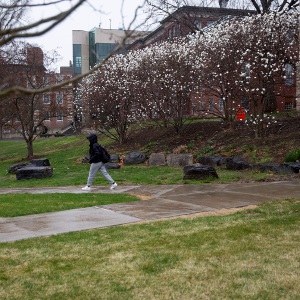 Zantop daughter: ‘I wish James' family the best and hope that they are able to heal’
Zantop daughter: ‘I wish James' family the best and hope that they are able to heal’
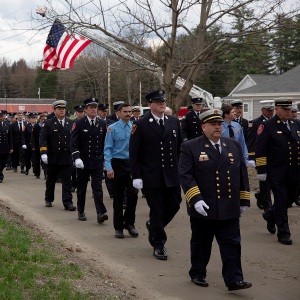 Crowd turns out to honor late Ascutney Fire Chief Darrin Spaulding
Crowd turns out to honor late Ascutney Fire Chief Darrin Spaulding
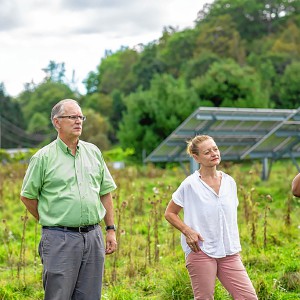 A Life: For Kevin Jones ‘everything was geared toward helping other people succeed’
A Life: For Kevin Jones ‘everything was geared toward helping other people succeed’
 Pick a sport and Pete DePalo’s has probably officiated it over the past 40-plus years
Pick a sport and Pete DePalo’s has probably officiated it over the past 40-plus years
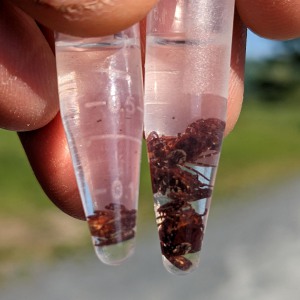 Out & About: Vermont Center for Ecostudies continues Backyard Tick Project
Out & About: Vermont Center for Ecostudies continues Backyard Tick Project
The loggers cut the trees right at the stump and haul off what can be used while leaving the rest.
“The debris we leave behind is kind of like a long-term fertilizer,” King said.
There’s a short-term benefit to the tree detritus, too.
“When we’re logging, we’re leaving as much woody material as possible in the roads for more ‘flotation,’ ” King said, which keeps his team’s equipment from cutting deep ruts into the forest floor.
Natural resources students of the Hartford Area Career and Technology Center cleared out the log landing and built a temporary parking area.
“They saved the town quite a bit of money,” Follensbee said.
The students also got hands-on experience in management itself.
The forest is replete with beech trees, partly because the voraciously hungry deer population in the area avoids them in favor of almost every other kind of tree.
But in an effort to establish other species, the harvest plan “manages out the beech,” Follensbee said, and the students have been cutting the population back.
Follensbee knew he and his crew had managed some degree of success when he spotted a sugar maple sapling in what had previously been a stand dominated by beeches.
“I was like, ‘Look guys, the plan is actually working,’ ” he said.
In writing the harvest plan, Follensbee was also careful to cut around some of the bigger oaks, which, unlike more convivial trees, are finicky when it comes to their personal space.
“Once they have more room to expand their crowns, we’ll have some pretty big old oaks in here,” he said, adding that the big oaks are especially good for habitat. “We’ve left some of what we call ‘wildlife trees’ all over the forest.”
Harvesting in the forest in the 1980s established a fair amount of red oak, Follensbee said, and with an eye toward changing conditions, Hartford’s management plan intends to increase the presence of the tree in the forest.
“Red oak is a climate change winner,” Follensbee said. The trees do well in warmer temperatures.
Similarly, John Bouton, a member of the Conservation Commission on the tour who also had a career as a forester, is concocting a project to move white oaks from a more southern tract of woods in Hartford up into the northern section of the Town Forest.
“As the climate is changing, white oak is going to be moving north,” Bouton said. “This kind of thing would help them out.”
But others see any timber management that includes harvest as an affront to the fight against climate change.
“I’ve been totally against this cut from the beginning,” Wilder resident Laura Simon said before the group left the parking area to begin the tour, emphasizing the lost potential for carbon sequestration.
“At some point this town has to realize we have to stop cutting trees.”
Frances Mize is a Report for America corps member. She can be reached at fmize@vnews.com or 603-727-3242.

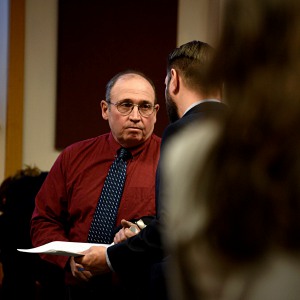 Former principal of South Royalton School released from prison
Former principal of South Royalton School released from prison Upper Valley residents among advocates for NH aid-in-dying bill
Upper Valley residents among advocates for NH aid-in-dying bill 
